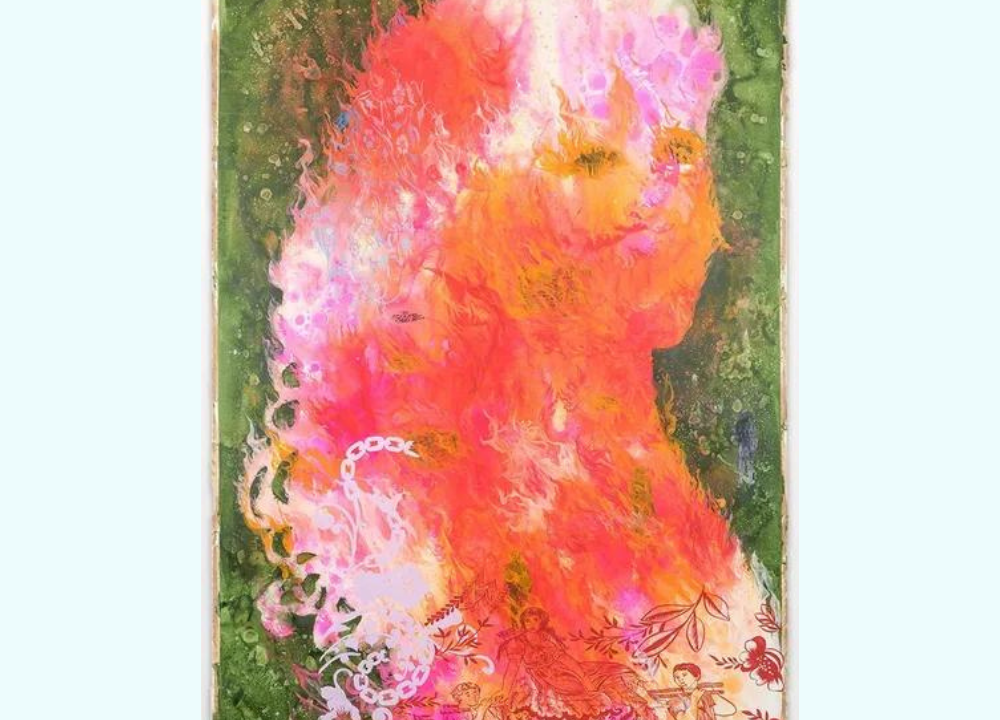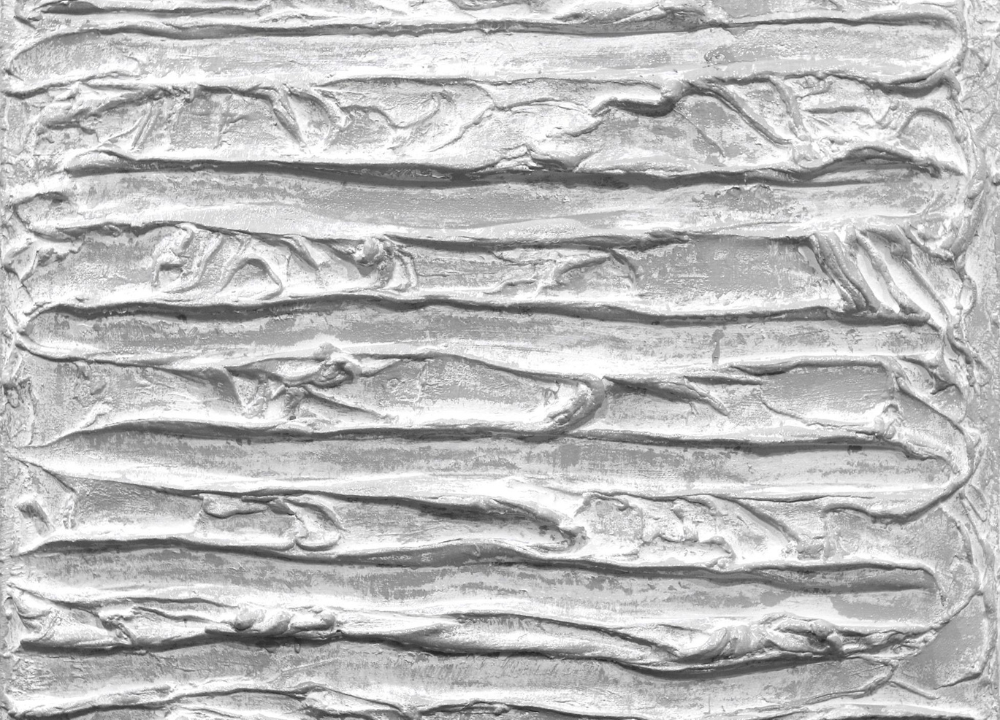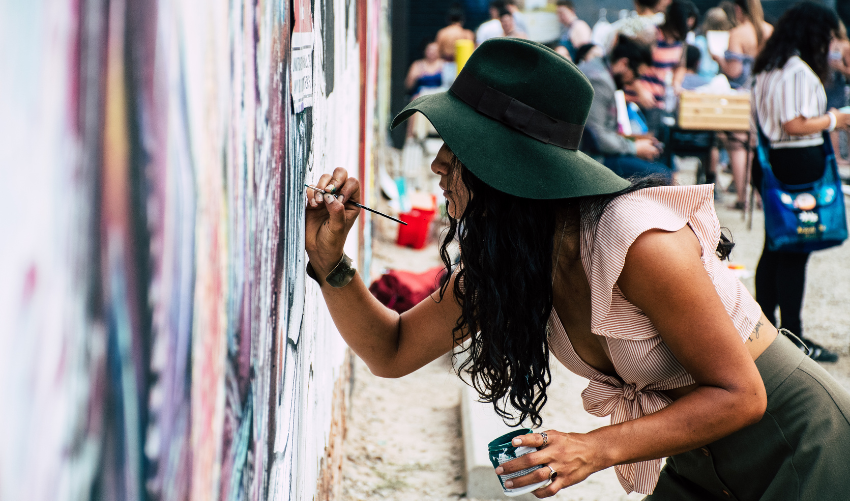For abstract art painting ideas, explore geometric shapes, bold colors, and spontaneous brushstrokes. Experiment with texture and layering for depth.
Abstract art allows for limitless creativity and self-expression. Artists can play with shapes, colors, and textures without the constraints of reality. This art form encourages experimentation and innovation, making it perfect for both beginners and seasoned artists. You can start by using simple geometric shapes and gradually incorporate more complex forms.
Bold and contrasting colors can add vibrancy and life to your artwork. Adding texture through layering or different materials can create depth and interest. The beauty of abstract art lies in its subjectivity, allowing each viewer to interpret the piece uniquely. This makes abstract art a versatile and engaging form of creative expression.
The History Of Abstract Art
Abstract art has a fascinating history that has shaped the way we perceive and create art today. This genre of painting breaks away from traditional representation, embracing a world of colors, shapes, and forms that evoke emotion and thought. Understanding the history of abstract art can provide valuable insights and inspiration for your own abstract art painting ideas. Let’s delve into its roots and key developments.
Early Beginnings
The roots of abstract art can be traced back to the late 19th and early 20th centuries. This period saw a dramatic shift in the way artists approached their work. Traditional art, which focused on realistic depictions, began to change.
Key factors that influenced this shift include:
- Industrial Revolution: Rapid technological changes made artists rethink their methods.
- Scientific Discoveries: New understandings of light, color, and perception influenced artistic techniques.
- Philosophical Movements: Ideas such as existentialism and modernism encouraged new forms of expression.
Among the first artists to explore abstraction were Wassily Kandinsky and Hilma af Klint. Kandinsky, a Russian painter, believed that art should express the inner feelings of the artist. He used vibrant colors and shapes to convey emotions. Klint, a Swedish artist, created abstract works that were spiritual and symbolic.
Key Movements And Artists
Several key movements have shaped abstract art. Each movement introduced new ideas and techniques. Here are some of the most influential:
| Movement | Key Characteristics | Notable Artists |
|---|---|---|
| Fauvism | Bold colors, simple forms | Henri Matisse, André Derain |
| Cubism | Geometric shapes, multiple perspectives | Pablo Picasso, Georges Braque |
| Expressionism | Emotional intensity, vivid colors | Edvard Munch, Egon Schiele |
| Abstract Expressionism | Spontaneous, gestural brushstrokes | Jackson Pollock, Mark Rothko |
Each movement contributed to the evolution of abstract art. Fauvism broke away from traditional color use, while Cubism challenged perspectives. Expressionism brought emotional depth, and Abstract Expressionism introduced new techniques.
These movements and their artists laid the groundwork for modern abstract art. They pushed boundaries and explored new ways of seeing and creating. Today, abstract art continues to evolve, inspiring artists worldwide.

Understanding Abstract Art
Abstract art captivates the imagination. It allows viewers to interpret shapes, colors, and lines in unique ways. Understanding abstract art opens doors to creativity. Dive into this world with our abstract art painting ideas.
What Is Abstract Art?
Abstract art does not represent reality. It uses colors, shapes, and forms to create a visual language. This art form emerged in the early 20th century. Artists wanted to express emotions and ideas without depicting objects.
Key Characteristics of Abstract Art:
- No Realistic Objects: Abstract art does not show realistic subjects.
- Focus on Color and Shapes: Artists use bold colors and geometric or organic shapes.
- Emotional Expression: The art aims to evoke feelings and thoughts.
Abstract art can be seen in many famous paintings. For example, Wassily Kandinsky’s works use colors and lines to express emotions. Piet Mondrian uses simple shapes and primary colors to create balance.
To better understand abstract art, look at these key elements:
| Element | Description |
|---|---|
| Line | Lines can be straight, curved, or angled, creating movement. |
| Color | Colors convey mood and emotion. |
| Shape | Shapes can be geometric or organic, adding structure. |
| Texture | Texture adds depth and interest. |
Different Styles And Techniques
Abstract art encompasses various styles and techniques. Each style offers a distinct way to express creativity. Here are some popular styles:
- Abstract Expressionism: This style uses bold colors and dynamic brushstrokes. Artists like Jackson Pollock and Mark Rothko are known for their expressive works.
- Geometric Abstraction: This style focuses on geometric shapes and patterns. Piet Mondrian and Kazimir Malevich are key figures.
- Minimalism: Minimalist art uses simple forms and limited colors. It emphasizes simplicity and clarity.
Techniques to Try:
- Drip Painting: Pour or drip paint onto the canvas. This technique creates spontaneous patterns.
- Collage: Cut and paste different materials onto the canvas. This adds texture and variety.
- Layering: Apply multiple layers of paint. This technique builds depth and complexity.
Experimenting with different styles and techniques can lead to unique abstract art pieces. Use these ideas to inspire your next masterpiece.
Finding Inspiration
Abstract art opens up a world of endless possibilities. Finding inspiration for your next painting can be an exciting journey. Whether you draw from nature, emotions, or everyday objects, the key is to explore and experiment. Here, we dive into some unique abstract art painting ideas to spark your creativity.
Nature And Landscapes
Nature offers a rich palette of colors, shapes, and textures. You can find inspiration in the changing seasons, the play of light, or the intricate patterns of leaves and flowers. Use these elements to create stunning abstract art.
- Seasons: Capture the essence of spring, summer, fall, or winter.
- Light and Shadow: Experiment with the effects of light on different surfaces.
- Patterns: Look for repetitive patterns in nature, like the veins of a leaf or the spirals of a shell.
Consider these color palettes inspired by nature:
| Element | Color Palette |
|---|---|
| Forest | Green, Brown, Earthy Tones |
| Ocean | Blue, Turquoise, White |
| Desert | Yellow, Orange, Red |
By observing and interpreting natural elements, you can create abstract art that feels alive and dynamic.
Emotions And Feelings
Art can be a powerful way to express emotions. Use your feelings as a guide to create abstract paintings that connect with viewers on a deeper level. Here are some ideas to get started:
- Joy: Use bright, vibrant colors and dynamic shapes.
- Sadness: Choose muted tones and softer, flowing lines.
- Anger: Incorporate bold, aggressive strokes and contrasting colors.
- Peace: Opt for calming blues and greens with gentle curves.
Consider representing emotions through different techniques:
- Color Psychology: Each color evokes different emotions. Use this to your advantage.
- Texture: Create texture with various tools to add depth to your art.
- Composition: The arrangement of elements can convey different feelings.
By tapping into your emotions, you can create abstract art that resonates deeply with others.
Tools And Materials
Abstract art painting allows artists to express emotions and ideas using colors, shapes, and lines. To create beautiful abstract art, having the right tools and materials is essential. These include the right canvas, paints, and tools to add texture.
Canvas And Paints
Choosing the right canvas and paints is crucial for abstract art. The canvas should be sturdy and of good quality. Popular choices include:
- Stretched Canvas: Ready to use and comes in various sizes.
- Canvas Panels: Lightweight and easy to frame.
- Canvas Rolls: Ideal for custom sizes.
Paints add color and life to your art. Here are some options:
- Acrylic Paints: Quick-drying and versatile.
- Oil Paints: Rich and vibrant but take longer to dry.
- Watercolors: Great for fluid and soft effects.
Using high-quality paints ensures your artwork stays vibrant. Consider investing in a set with multiple colors. Experimenting with different brands can help you find the perfect match for your style.
Experimenting With Texture
Adding texture makes abstract art more engaging. Here are some tools to experiment with:
- Palette Knives: Create sharp lines and layers.
- Sponges: Add soft, blended textures.
- Brushes: Vary the size and shape for different effects.
Other materials to consider:
- Modeling Paste: Adds thick, raised areas.
- Gesso: Prepares the canvas and adds texture.
- Sand: Mix with paint for gritty effects.
Experiment with different combinations to find what works best. Layering different textures can add depth and interest. Don’t be afraid to mix and match materials. Your creativity has no limits!
Color Theory In Abstract Art
Abstract art is a realm of boundless creativity. Color theory plays a crucial role in it. Colors in abstract art convey emotions, create moods, and tell stories without words. Understanding color theory can elevate your abstract paintings. Let’s dive into how to choose the right colors and create depth and movement in your art.
Choosing The Right Color Palette
Choosing the right color palette is essential. A well-chosen palette can evoke specific emotions and set the tone of your artwork. Here are some tips:
- Complementary Colors: Colors opposite each other on the color wheel. They create vibrant contrasts. For example, blue and orange.
- Analogous Colors: Colors next to each other on the color wheel. They create harmony. For example, blue, blue-green, and green.
- Monochromatic Colors: Different shades, tints, and tones of a single color. They create a cohesive look.
Here’s a simple table to visualize these color schemes:
| Color Scheme | Example Colors |
|---|---|
| Complementary | Red & Green |
| Analogous | Yellow, Yellow-Orange, Orange |
| Monochromatic | Blue, Light Blue, Dark Blue |
Experiment with these schemes. Don’t be afraid to mix and match. Use a color wheel to help guide your choices. Remember, the goal is to express your unique vision.
Creating Depth And Movement
Creating depth and movement brings life to abstract paintings. Here are some techniques:
- Layering: Apply colors in layers. It creates depth. Use thin layers of paint. Build them up gradually.
- Gradients: Blend colors smoothly from light to dark. It gives a sense of depth and light.
- Brush Strokes: Vary your brush strokes. Use long, sweeping strokes for movement. Short, choppy strokes add texture and depth.
Consider using these techniques together. For example, start with a gradient background. Then, add layers of different colors. Use varied brush strokes to enhance the effect.
Here’s a quick guide:
- Choose a gradient background.
- Add layers of thin paint.
- Use different brush strokes.
These steps help create a dynamic and engaging abstract painting. Experiment and find what works best for you. Remember, abstract art is about expressing yourself. Let your creativity flow freely.
Composition And Balance
Abstract art painting is a fantastic way to express emotions and ideas without relying on recognizable forms. One essential aspect of abstract art is the concept of composition and balance. This involves arranging elements in a way that feels harmonious and visually appealing. By mastering composition and balance, artists can create captivating and meaningful works of art.
Exploring Negative Space
Negative space is the area around and between the subjects of an artwork. In abstract painting, exploring negative space can lead to intriguing and thought-provoking compositions. Here are some ideas to consider:
- Emphasize Empty Areas: Use large, open spaces to draw attention to specific elements.
- Balance Positive and Negative: Ensure that the negative space complements the positive space.
- Experiment with Shapes: Play with different shapes and their placements to create a sense of depth.
To visualize the importance of negative space, consider the table below:
| Element | Description |
|---|---|
| Positive Space | Occupied by the main subjects of the artwork. |
| Negative Space | Surrounds and defines the positive space, enhancing the overall composition. |
By carefully managing negative space, artists can create more balanced and engaging abstract paintings. This technique helps to highlight the main elements while maintaining a sense of harmony.
Creating Dynamic Compositions
A dynamic composition adds movement and energy to an abstract painting. Here are some tips for creating dynamic compositions:
- Use Diagonal Lines: Diagonal lines guide the viewer’s eye across the canvas.
- Incorporate Contrast: Mix bold and subtle elements to create visual interest.
- Layer Elements: Overlapping shapes and colors add depth and complexity.
Dynamic compositions can be further enhanced by considering the following factors:
- Color Harmony: Use a harmonious color palette to unify the composition.
- Varying Textures: Combine different textures to add tactile interest.
- Asymmetry: Asymmetrical arrangements can create a sense of movement and excitement.
By experimenting with these techniques, artists can infuse their abstract paintings with energy and vibrancy. This approach not only captures the viewer’s attention but also evokes a strong emotional response.

Frequently Asked Questions
How Do You Start An Abstract Art Painting?
Begin by gathering your materials. Choose a color palette. Create a rough sketch. Experiment with shapes and textures. Trust your instincts.
How To Get Ideas For Abstract Painting?
Explore nature, emotions, and music for inspiration. Experiment with colors and shapes. Study famous abstract artists. Keep a sketchbook for ideas.
What Are The 3 Things That Make Up Abstract Art?
Abstract art consists of three main elements: color, form, and line. These components create visual compositions that do not rely on recognizable subjects.
What Are The 4 Elements Of Abstract Art?
The four elements of abstract art are color, form, line, and texture. These elements create non-representational compositions, emphasizing creativity and expression.
Conclusion
Exploring abstract art painting ideas can ignite creativity and offer endless possibilities. Experiment with colors, shapes, and textures to find your unique style. The beauty of abstract art lies in its freedom and personal expression. So, grab your brushes and start painting your abstract masterpiece today.
Your artistic journey awaits!




